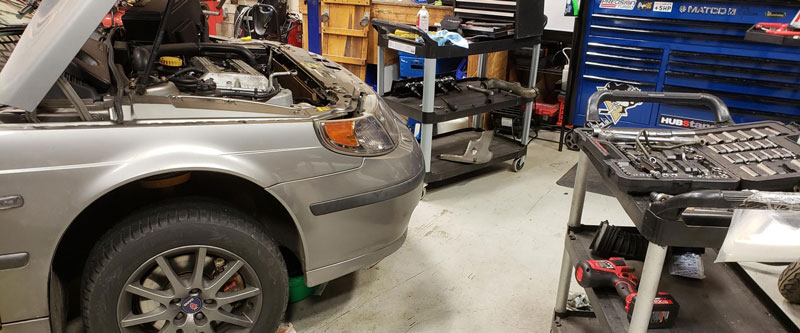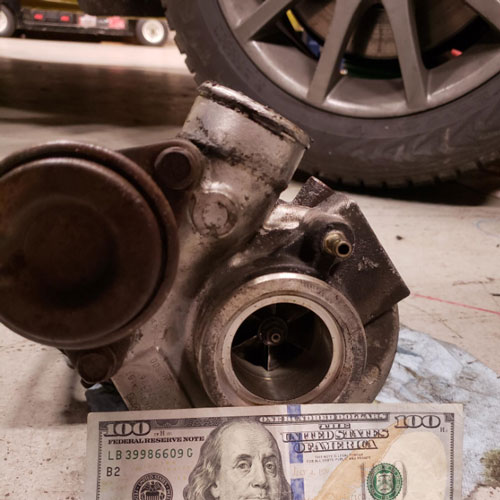When you work at an online car parts company catering to aging European cars, you’ll interact with and observe the actions of plenty of people doing their own mechanic work. When you’ve been there for many years, you’ll notice trends. I wanted to take some time and point out some of those in an effort to keep people from encountering the same pitfalls. When your car is broken, you need it back on the road fast. Here are the do’s and don’t of DIY.
Do: Pay Close Attention To Safety
 Working on cars is dangerous, and after awhile it’s easy to become complacent. That’s when bad things happen. Anyone that’s a member of mechanic forums or social media groups have seen some pretty ghastly injuries. The worst part is, every single injury is avoidable with just a little forethought. If you are working under a car and looking up, wear safety glasses. Rust and dirt fragments getting in your eye will RUIN YOUR DAY. Always use jack stands, and additionally make sure what you are putting them under is structurally sound. Nobody wants the task of having to lift a car off you when your jack stand punches through the rusty jack point on your VW.
Working on cars is dangerous, and after awhile it’s easy to become complacent. That’s when bad things happen. Anyone that’s a member of mechanic forums or social media groups have seen some pretty ghastly injuries. The worst part is, every single injury is avoidable with just a little forethought. If you are working under a car and looking up, wear safety glasses. Rust and dirt fragments getting in your eye will RUIN YOUR DAY. Always use jack stands, and additionally make sure what you are putting them under is structurally sound. Nobody wants the task of having to lift a car off you when your jack stand punches through the rusty jack point on your VW.
When servicing a power tool, always make sure power is disconnected either by taking off the battery or air line. It takes a second and it removes the possibility of accidentally running an m12 nut up over your second knuckle or sawzalling off a thumb. Hot things are hot….etc ad nauseum. Wear gloves to protect your hands from dangerous chemicals or hot parts and keep your wits about you. Think about every action.
Don’t: Cut Corners
When working on cars, there are always steps that you technically could skip. Almost always, those steps are in relation to ease of access. When looking through a service manual, you’ll notice that sometimes you have to take off a huge number of items to get to the part you are actually replacing. In my experience, just do it. I’ve personally tried to skip steps in order to not remove this or just bend something out of the way…but it rarely actually pays off. Rather, you’ll find yourself struggling to get to that bolt for much longer than it would have taken to just remove the heat shield. Just take the heat shield off.
Another common item people skip relates to hardware. Lots of hardware these days is one-time-use only, such as aluminum bolts. They are easy to spot, and have a very specific look to them. These bolts (and lots of other styles of hardware) are designed to stretch, which means you can’t reinstall the part you just took off with the same bolts. If you do, the next time you open it all up you risk snapping something, and nobody is saving any time or any money after that happens. If you need help finding the hardware for a certain part, just contact us. We have access to dealer software with diagrams, and can supply the hardware with any replacement part.

The last thing often skipped is thread lockers and sealants. High energy electrical components like spark plugs and head light bulbs should get some dielectric grease on the contacts or you risk siphoning off energy that arcs along moisture/condensation. When installing brake parts, using high temperature anti-seize will ensure your next brake job won’t be a battle. Use thread locker on engine components when advised, since vibration and heat often cause them to back out.
Finally, use a torque wrench and follow published torque specs to do the perfect job every time.
Do: Your Own Research
One of the biggest favors you can do for yourself is your own research. We have customers on the daily that make expensive decisions based on one response on one social media thread from someone that is probably not a mechanic themselves. This is a sure way to start hemoraging money buying parts that you don’t need.
Similarly, people come to us with obscure problems asking us what part they should buy to fix them. To tell you the truth, we probably don’t know off the top of our head how to change the charcoal canister on your 2002 Audi A6 or what that squeak might be. However, we do know how to look it up using tools that are readily available online to anyone. Doing your own research, and weighing answers from multiple sources, is the best way to prepare yourself for the upcoming task.
Don’t: Get In Over Your Head
 Yes, you might know a guy that was able to do the clutch in his E36 on the ground in his driveway. That doesn’t mean you can. When you are motivated to do your own work, you will be astounded at how quickly you can figure things out. As long as you follow the rules above, you can go from never tightening a nut in your life to turbo-swapper supreme in a short amount of time, IF you follow the instructions. There are great shop manuals available online to help you change nearly anything on your car, as long as you have the right tools (which as you can see, is next).
Yes, you might know a guy that was able to do the clutch in his E36 on the ground in his driveway. That doesn’t mean you can. When you are motivated to do your own work, you will be astounded at how quickly you can figure things out. As long as you follow the rules above, you can go from never tightening a nut in your life to turbo-swapper supreme in a short amount of time, IF you follow the instructions. There are great shop manuals available online to help you change nearly anything on your car, as long as you have the right tools (which as you can see, is next).
A personal favorite of mine is the AllData DIY subscription. Alldata is a company that makes extremely concise instructions for mechanic’s workshops. The instructions can include everything from control arm swapping to head gaskets and even electrical diagnostics for a huge variety of cars. The best part is you can preview every step before getting dirty. Fortunately they recently released a DIY service that allows you to pay for a single car, vs having access to the entire database. That makes it extremely economical. I hate advocating for something we don’t sell but trust me, it’s worth it. Get a copy now.
Don’t be the guy that always asks for help after you’re halfway through a job you can’t finish. Nobody likes that guy.
Do: Have The Right Tools
Similar to the shortcuts section above, having the right tools for the job means the difference between banging something out after work or spending your entire weekend struggling. It depends on how much your time is worth to you, but personally I feel like I have better things to do than cursing for 3 hours because I can’t quite get a nut tightened somewhere. Having a box that’s ready to tackle every situation is tough, but after a few years you’ll know what you need.

Most tool companies sell large pre-assembled tool kits in convenient cases. For the beginner DIY’er, these are an excellent and inexpensive way to get a large variety of tools to start out, and I recommend them. Later, you can swap things out and add more tools to your collection but for the majority of tasks these are a great option. Large magnetic lights and shop towels are your friend!
Don’t: Spread Tools And Parts All Over Your Garage
You don’t want to end up with extra parts, and a good way to make sure everything goes back in as easily as it came out is to stay organized. If you don’t have a lot of room, try to keep like-systems together and move in a linear fashion through the job to prevent a lot of back and forth. A small stack of tupperware bins works great to keep hardware, brackets, oil lines etc separate and clean. Even better are magnetic trays that can be found at any hardware store to make it impossible to spill.

Keep your tool box close and when you are done with a tool put it back. Pacing around the work area looking for that pair of pliers for 15min kills all the time you saved by not just reaching over and putting the tool back in the box. Replace hardware back where it came off whenever possible to reduce the amount of loose nuts and bolts laying around. For example, if you remove an exhaust manifold, you can put the nuts back on the studs for safe keeping. If a bolt held a bracket to the block, you can thread the bolt back in after the bracket is removed.
Recap
You can save thousands of dollars by doing work yourself, but there’s more to working on your car than just bolting and unbolting parts. Safety is paramount, you can absolutely wind up dead if you aren’t careful. Don’t cut corners, it’ll usually cost you more time in the end (as with anything) and can even result in an unsafe repair. Do your own research, it’s never been easier to find people online that have fixed the same problem you have.
The #1 issue we see is uninformed people trying to guess, don’t do that. Use multiple sources and you’ll be stylin’. Don’t get in over your head. It’s easy to find yourself halfway through the project and missing a special tool that you didn’t realize you needed, or unable to lift something into place. Plan ahead and be familiar with the task at hand before diving in. Have the right tools. Without them, you simply won’t be able to do the job, plain and simple. Lastly, stay organized! Good luck out there DIY’ers! Working on your own car is a fun and rewarding, but can also be a complete nightmare. Follow the steps above and you’ll be in a good position to actually enjoy your next project, rather than loathing it!




nice article great ink for help
Another thing I would like to add – don’t skimp on tools. Cheap/poor tools = injuries and damaged parts. Get good quality tools to begin with and they will last a lifetime. And they won’t break when you put pressure on them!